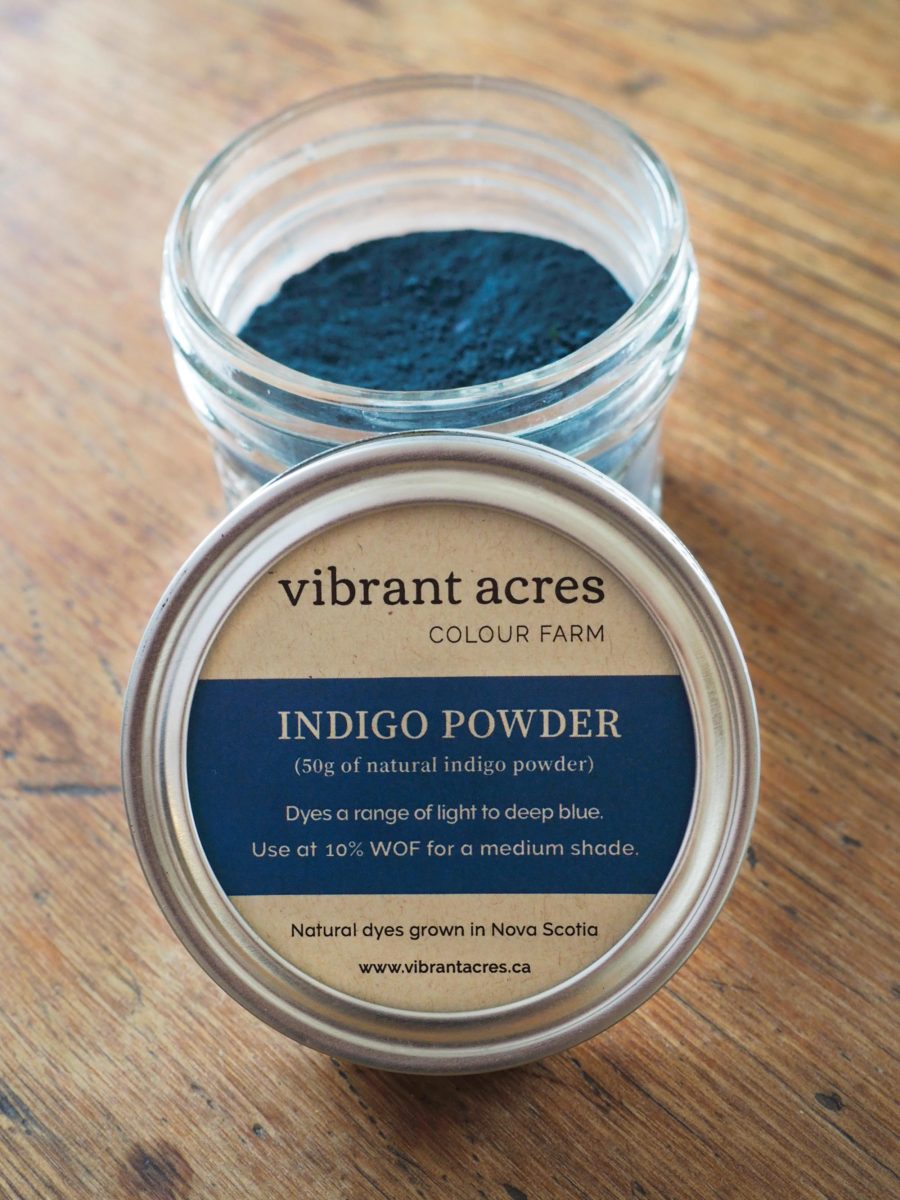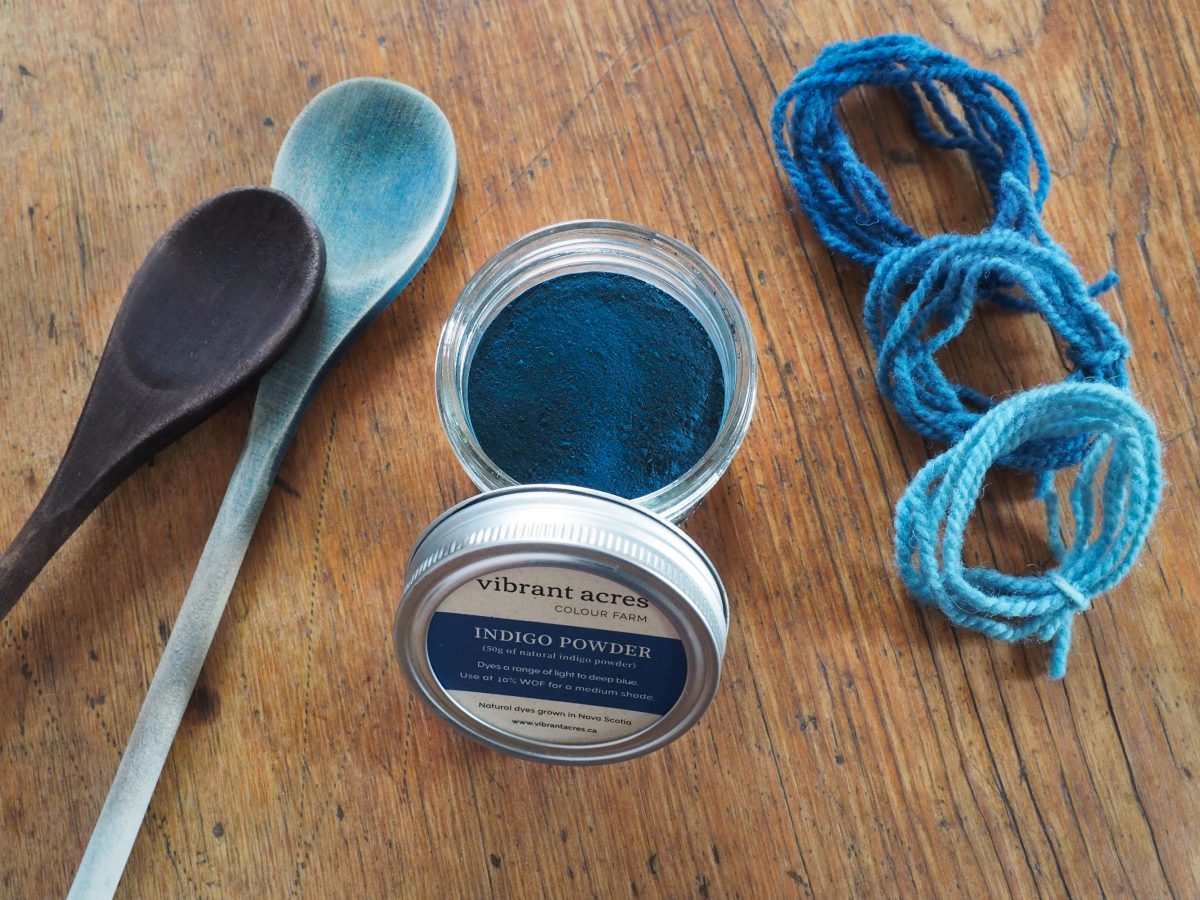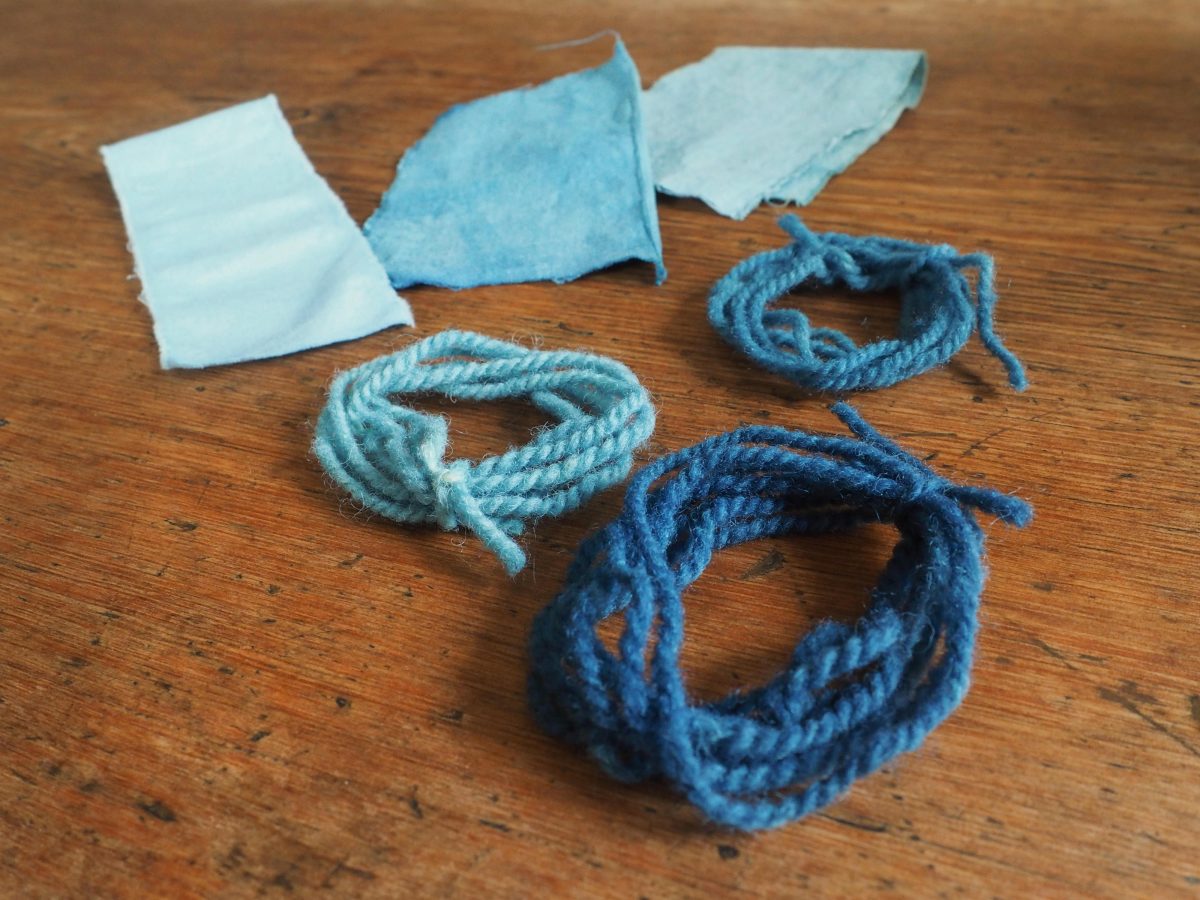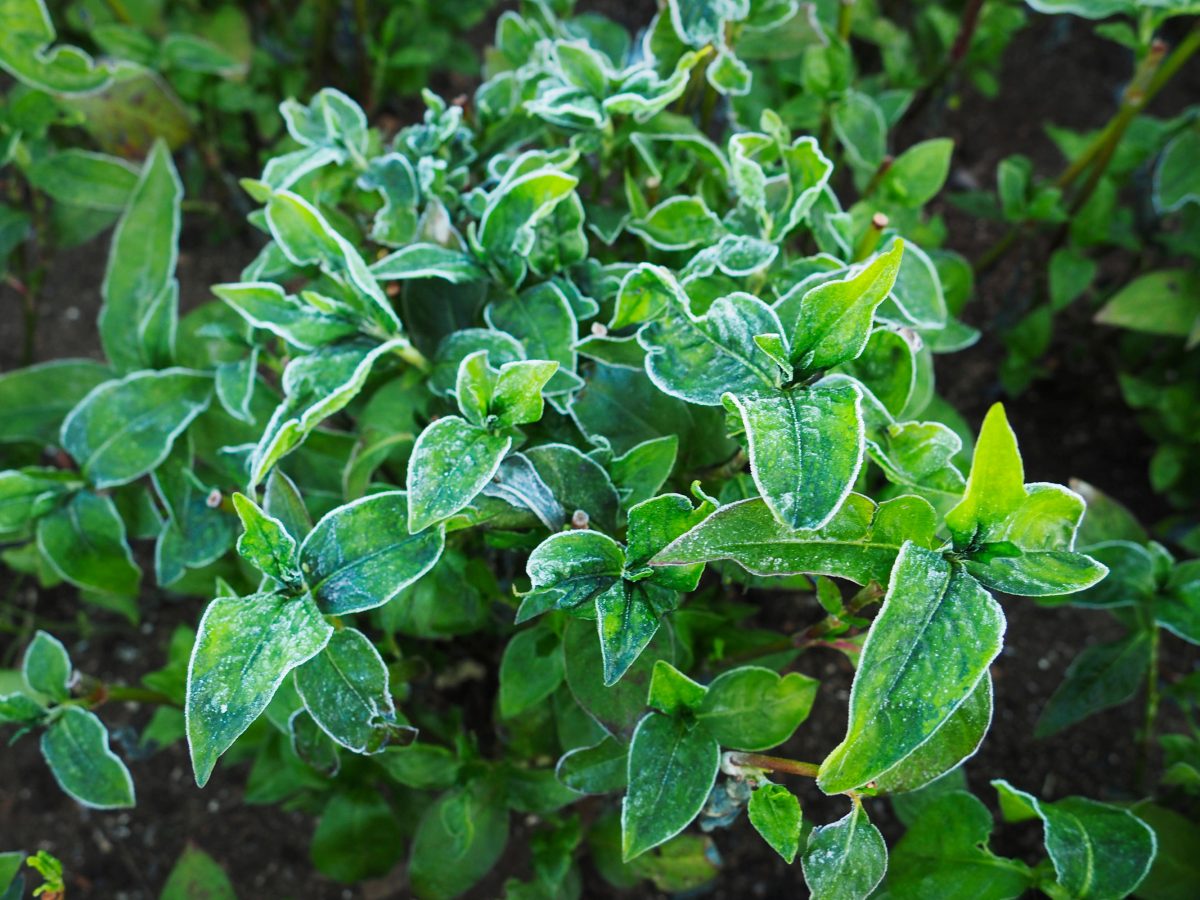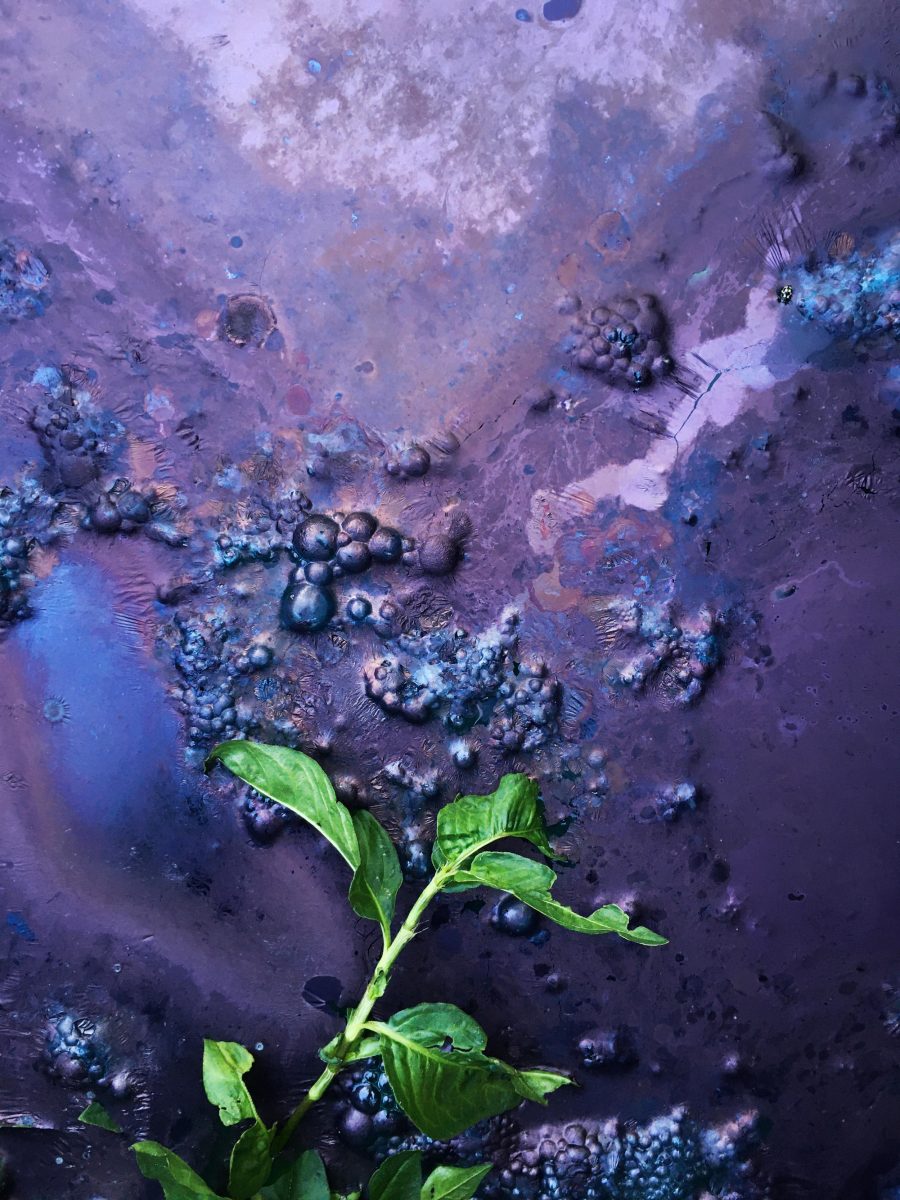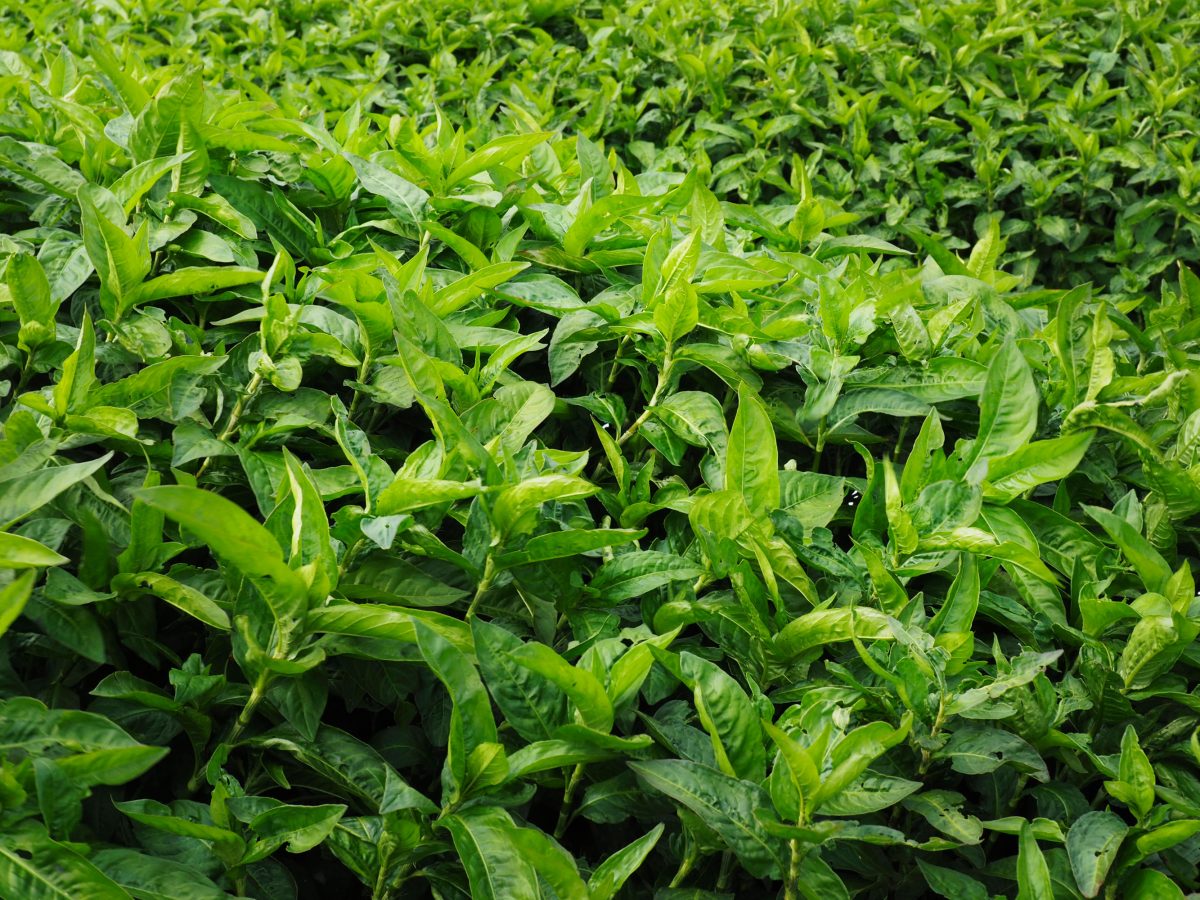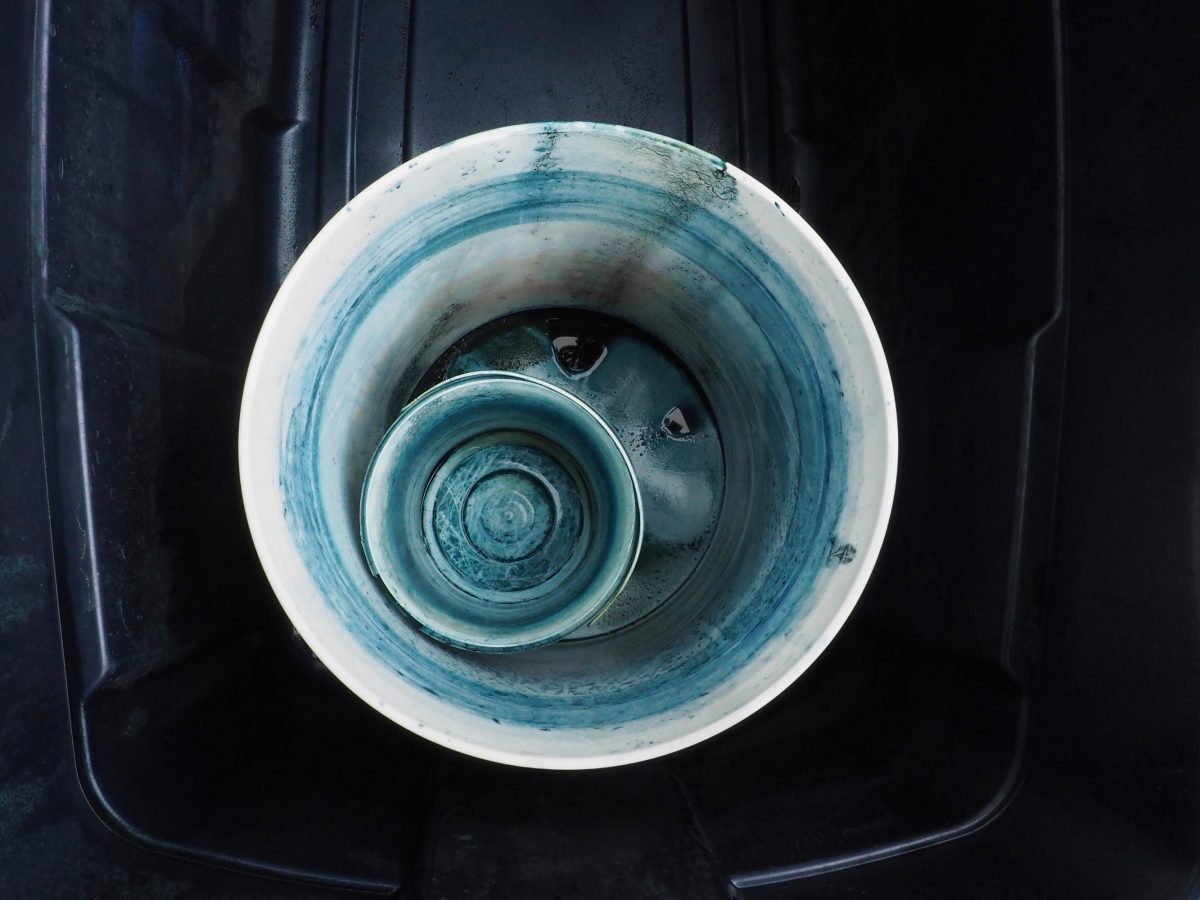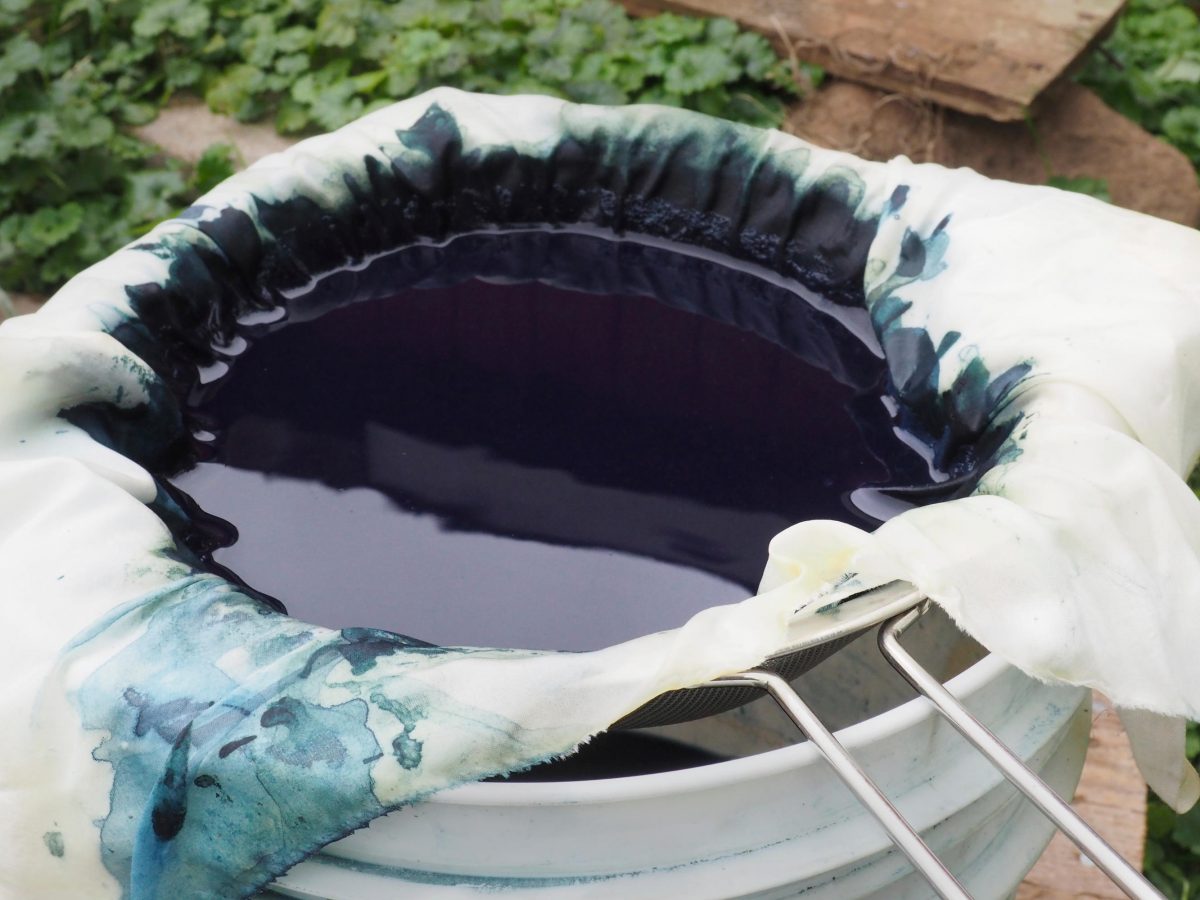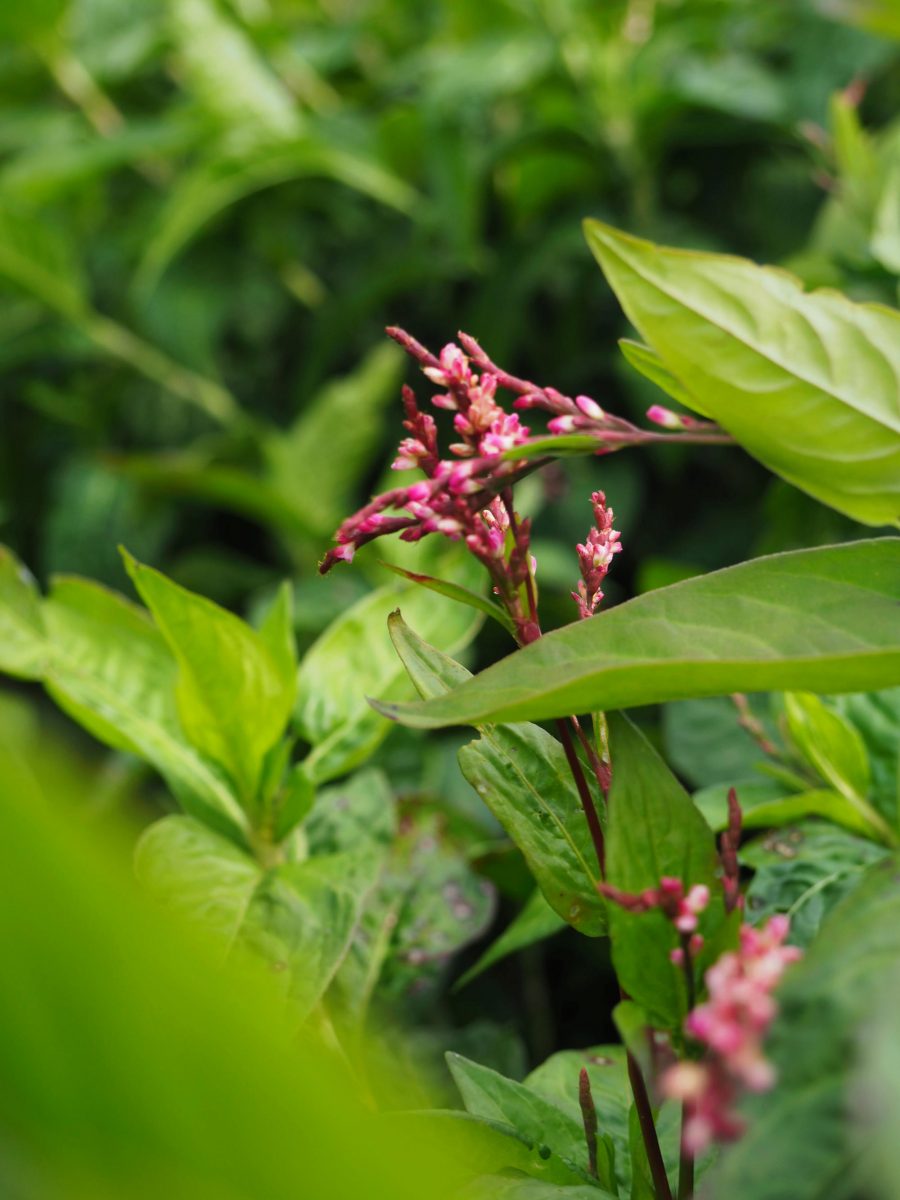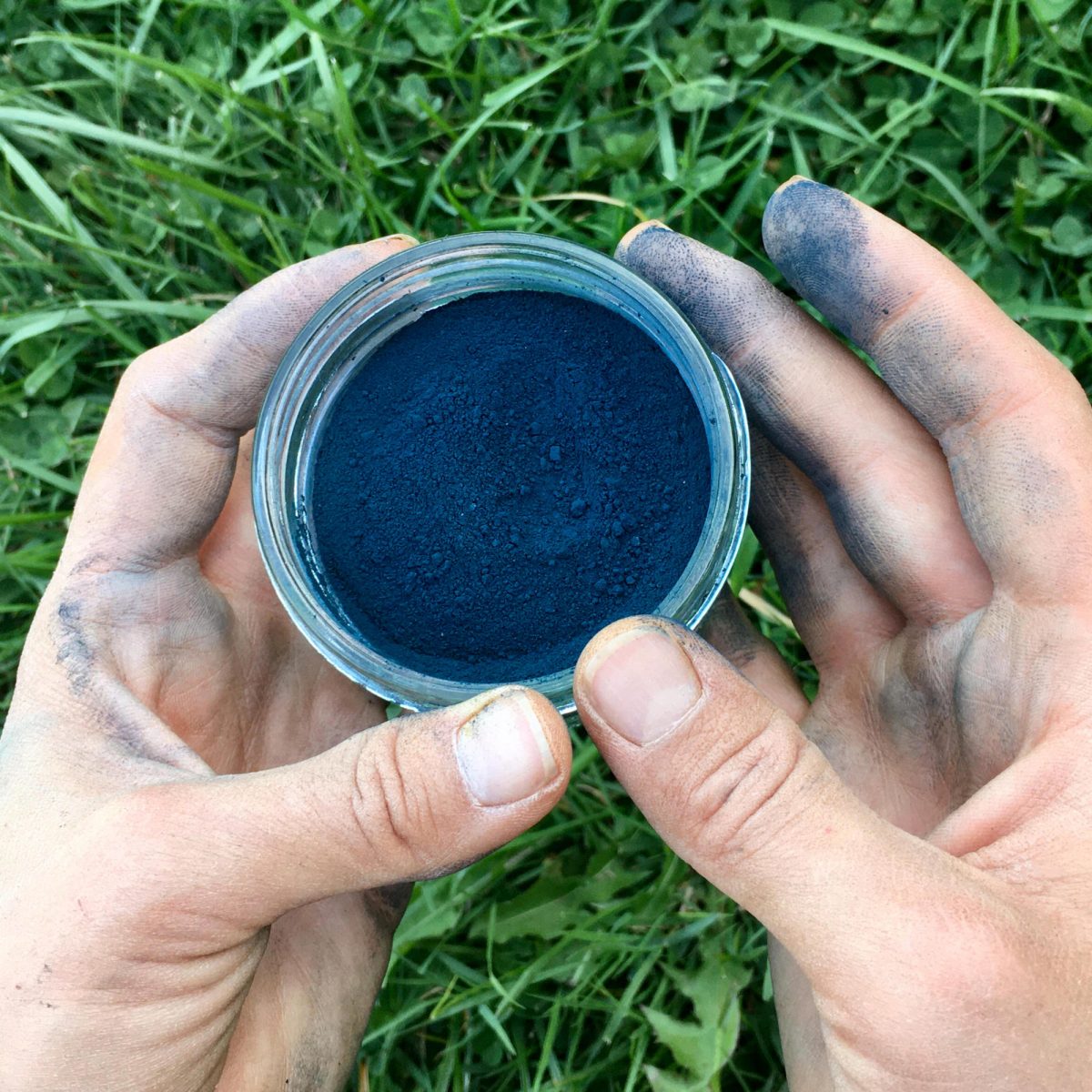Japanese Indigo, Persicaria tinctoria
It never ceases to amaze us that a fairly unassuming green leafy plant can create such a vibrant blue from its leaves! Japanese indigo just loves our clay soil and maritime climate and we find that it grows very well on our farm. It takes us up to a week to process each indigo harvest. We harvest the plants at their peak, wash them, and then leave them to soak in a water bath. This causes them to ferment and release their blue pigment. We then follow a very careful process to precipitate, collect, and dehydrate the purest blue pigment possible. It took us two years to develop our process and we’re so pleased to be making a Canadian-made indigo powder available to artists and makers. We hope you enjoy our “Fundy Blue”!
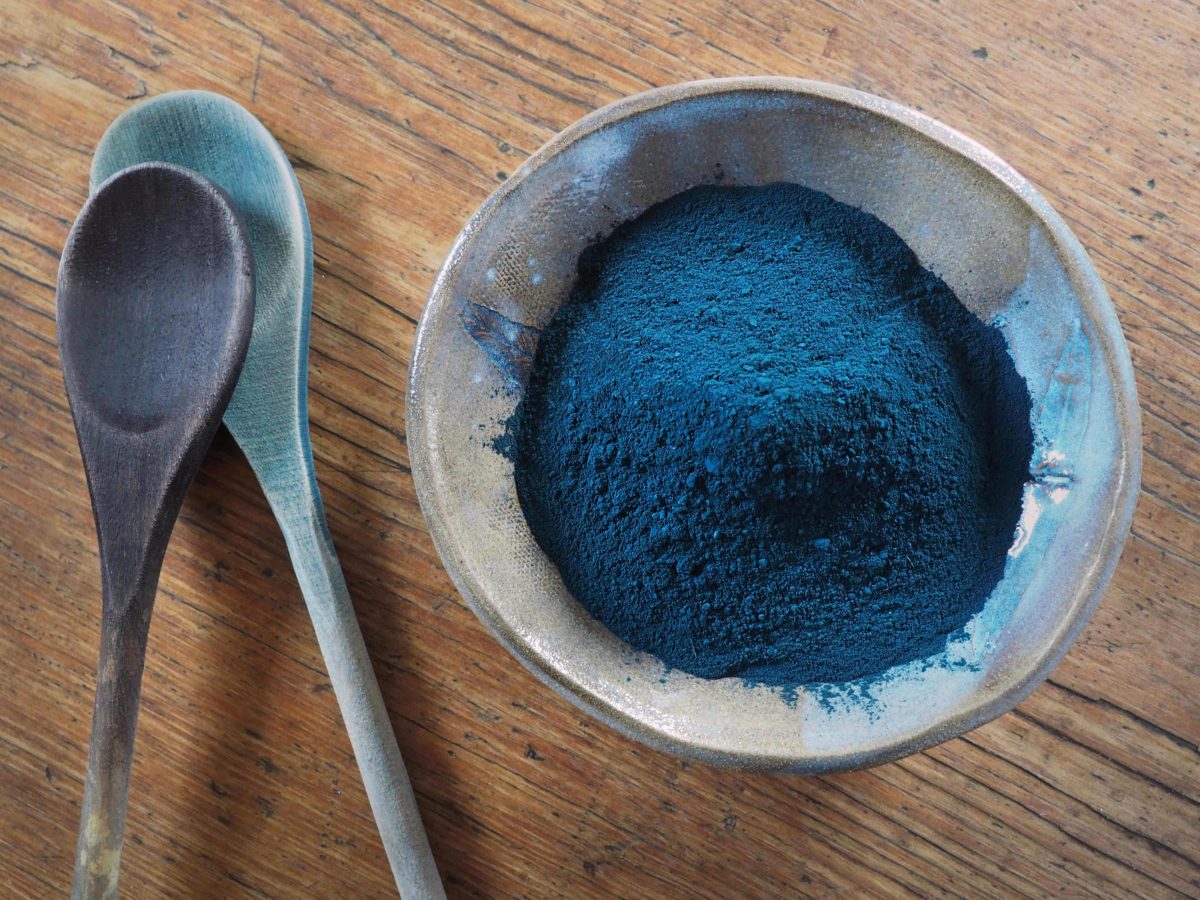
Key Dye Colours: Light blue to dark blue.
Dye Process: The indigo dyeing process requires a vat. We typically use a fructose vat with a reduced quantity of calcium hydroxide. We have had the best results with: 1 part indigo powder, 1 part calcium hydroxide, 3 parts fructose. You can use any of your go-to vat processes. When dyeing with indigo powder, you do not need to mordant your fibres before dyeing.
A 50g jar will dye: 250g of fibre a deep dark shade, 500g a rich medium shade, and up to 2kg a pale shade. A typical wool skein is 100g.
Key Modifiers: Indigo can be used to over-dye other colours such as yellows to produce greens or reds to produce purples.
Washfastness: Excellent.
Lightfastness: Excellent.
Overall Colourfastness: Excellent.
For a lighter range of blues and teals, you can use dried indigo leaves. They can be an affordable option to get started with dyeing blues – and, of course, they produce lovely results in their own right.
We have only a very limited quantity of our indigo powder available.
Natural colour grown with care
This natural plant dye was grown with care on our small farm in Nova Scotia’s Annapolis Valley. All of our dye plant material is dried on site immediately after harvest to preserve quality and maximum vibrancy of colour.
Natural dyes can only be used on natural fibres (cotton, linen, wool, bamboo, hemp, silk). For best results, natural fibres should be pre-prepared using a mordant or tannin before dyeing. Natural dyes and mordants are available in our online store.
Natural dyes create unique living colours that will evolve and wear over time as they are washed, worn, and loved creating colours and garments that are alive, telling the story of their use. While they are not as consistently repeatable or as durable as many synthetic dyes, they are far more environmentally friendly and, in our opinion, absolutely unmatched in magic and beauty. If you are new to natural dyes, we have a free guide to getting started with natural dyes.
